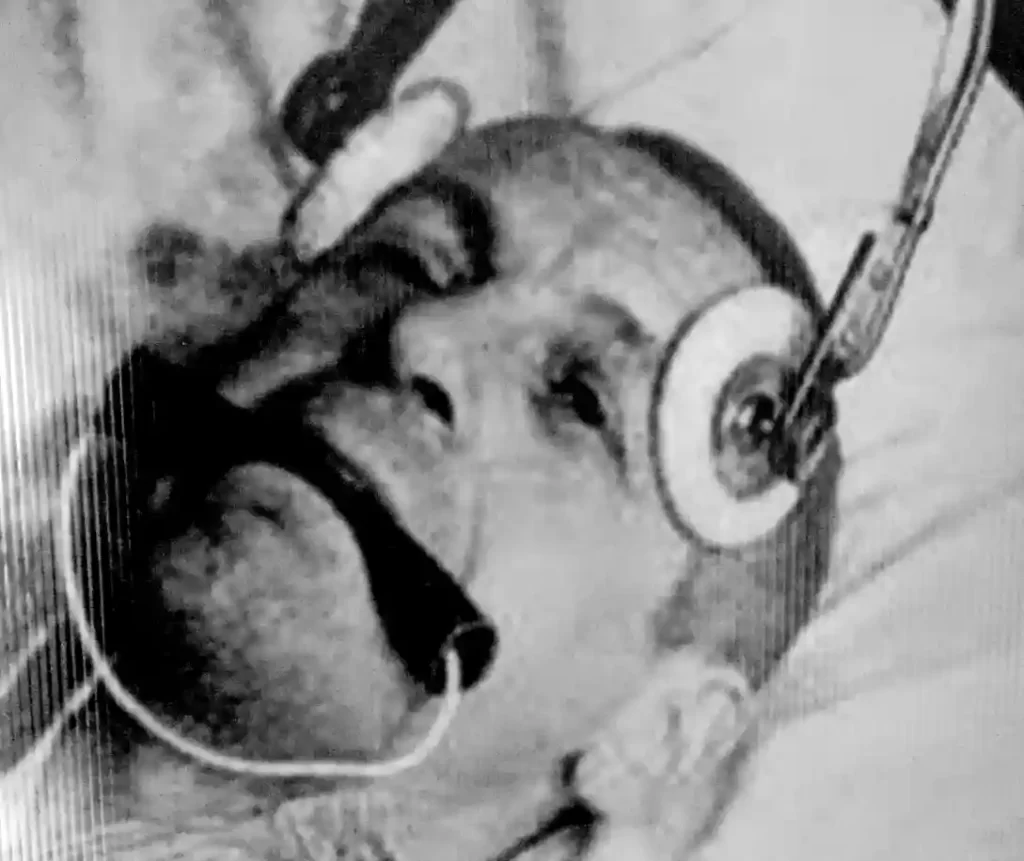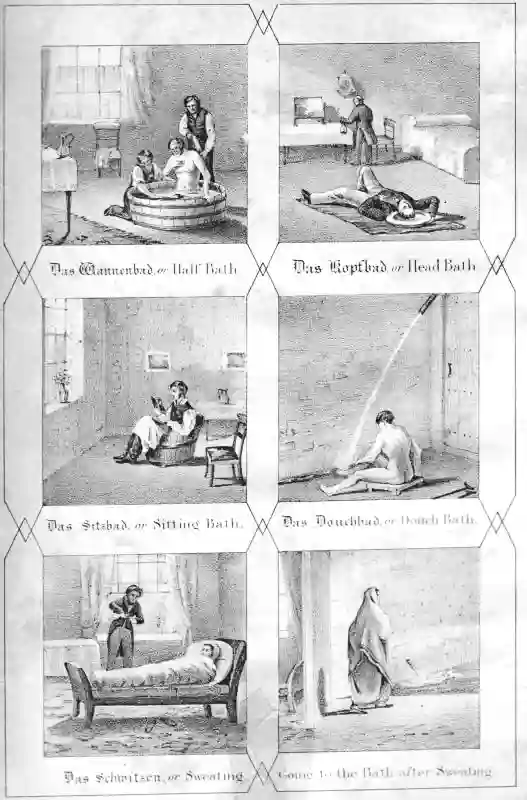The Trans-Allegheny Lunatic Asylum was established as part of a nationwide mental health reform effort. This vast attempt began in 1858 under the direction of Thomas Story Kirkbride, a physician who advocated for the mentally sick. With vast, well-lit rooms and sprawling grounds for leisure activities, his designs aimed to encourage healing and wellness.

However, the start of the Civil Conflict interrupted the construction, only to begin after the conflict finished in 1863. When it was completed in 1881, the institution was the biggest hand-cut stone masonry building in North America and the second largest in the world, second only to Russia’s Kremlin.
As the years passed, the Asylum’s operations changed dramatically. Overcrowding, lack of funds, and questionable therapies hampered what was once a haven for the mentally ill. By the early twentieth century, its good intentions had faded. The once peaceful corridors became filled with the chaotic echo of patients left to their own devices, often left unclothed and unbathed.
Lobotomies, electroconvulsive therapy, and insulin coma therapy were all introduced in the 1940s and 1950s. Unfortunately, during this time, the facility had some of its darkest days, with reports of patient abuse and neglect becoming more common.
Due to changes in patient treatment and a critical expose by the Charleston Gazette about the Asylum’s awful conditions, the Asylum’s doors ultimately closed in 1994. Despite the institution’s closure, its horrific past refused to fade into obscurity.
The Asylum is now a magnet for ghost hunters and paranormal investigators, and its eerie corridors have even appeared on prominent paranormal television shows. While it no longer shelters the mentally ill, its history lives on, fueling the stories of apparitions and echoing voices many visitors claim to have encountered.
The Trans-Allegheny Lunatic Asylum, without a doubt, stands as a harsh reminder of our past, casting an unsettling, memorable shadow over the history of mental healthcare.

Trans-Allegheny Lunatic Asylum- A Haven Turned Hellhole
Overcrowded Halls
The crowded halls of the Trans-Allegheny Lunatic Asylum are a vivid reminder of the institution’s history. Originally designed to house 250 people, the facility was overcrowded by the 1950s, with a patient population 2,400.
Such overcrowding was a damning symbol of the mental health crisis of the eraAs the number of patients increased, the resources and treatment available could not keep up. The originally huge chambers, which were intended to encourage peace and healing, became crowded living places. Patients were crammed into small spaces, and numerous people were frequently forced to share a single bed.
Both the patients and employees suffered as a result of the challenging environment. The patients, who were already dealing with mental health concerns, were placed in a harsh, impersonal setting devoid of comfort and respect. In addition, the excessive number of patients made it hard for the staff to provide proper care and attention to each individual.
Under such circumstances, the Asylum transformed from a shelter to a warehouse for persons seen as society’s outcasts. Neglect and abuse were common as the personnel battled to keep order due to the overwhelming quantity of patients.

Population growth and terrible living circumstances have indelibly impacted the structure. Many people attribute the Asylum’s haunted reputation to the immense pain that took place within its packed corridors. Visitors and ghost hunters today recount mysterious voices and spectral apparitions, which are thought to be echoes of the Asylum’s troubled past.
Mistreatment and Suffering
The Trans-Allegheny Lunatic Asylum’s overpopulation was only the tip of the iceberg. A tragic undercurrent of maltreatment and suffering ran deep beneath the surface, marking the walls with a haunting legacy.

The Asylum’s poor conditions reflected the prevailing attitudes and understanding of mental health at the time. As a result, treatments that would be considered torture by today’s standards were routine. One such approach was electroconvulsive therapy, which included administering electric shocks to a patient’s body, frequently resulting in seizures and memory loss.
Then there was Walter Freeman’s renowned lobotomy, which he pioneered in the 1940s. This operation entailed putting a sharp tool, similar to an ice pick, through the eye socket into the brain to disrupt frontal lobe connections. Unfortunately, many patients were severely handicapped due to this invasive and violent treatment, and some did not survive.

The facility also practiced hydrotherapy, which involved placing patients in ice-cold baths for extended periods, often for several hours or even days. The theory behind this treatment was that such severe temperatures would shock the psyche back to normalcy.
Apart from these brutal methods, the living conditions were appalling. There have been reports of patients living in filth due to poor facilities. A story from the Charleston Gazette in the early 1990s portrayed scenes of patients sleeping on the floor due to a lack of beds. The communal areas were also noted as run-down and unclean in the study.
Such tales of cruelty and misery may still be found in the folklore surrounding the Trans-Allegheny Lunatic Asylum. They contribute significantly to the concept that the spirits of those who died within its walls continue to haunt the place. The misery and pain undergone by its sufferers are regarded as a powerful cause of the weird happenings and spectral sightings that visitors continue to recount to this day.

It’s a disturbing reminder of a time when society’s understanding of mental illness was severely limited, and the Asylum’s residents faced the brunt of this ignorance.
The Asylum Today: A Specter of the Past
The Trans-Allegheny Lunatic Asylum closed its doors in 1994, but its creepy stories live on. It is now a famous location for both paranormal enthusiasts and history buffs. Its now-silent hallways are reported to reverberate with spectral whispers from the past.
Ghostly Encounters
The Trans-Allegheny Lunatic Asylum has long been considered a haunted location. Many visitors, ghost hunters, and staff members have claimed strange happenings within its ancient stone walls.
A former patient named Lily is considered one of the most prominent spectral occupants. According to stories, Lily was born at the Asylum, where her mother was a patient. Visitors have described multiple encounters with what they believe to be Lily’s ghost, which is often described as playful.
Some claim to have seen balls move independently, while others claim to have heard a child’s laughter echoes through the silent corridors. Electronic devices designed to assess paranormal activity have gone off unexpectedly in Lily’s room multiple times, much to the observers’ surprise.
Another terrifying claim comes from the Asylum’s fourth level, where residents have seen a ghost of a soldier. Some say he’s a Civil War soldier, maybe from the time troops took over the incomplete hospital. Others believe he is a uniformed man from a different era. Several visitors claim to have seen this spectral soldier wandering the halls.
There have been reports of a ghostly nurse in one of the units known as the “violent women’s ward.” This figure, dressed in an old-fashioned nurse’s uniform, is frequently seen bringing a medicine tray along the corridor. She is usually seen out of the corner of the eye and vanishes when directly looked at.
The lobotomy recovery area of the facility is also an attraction for supernatural events. Visitors frequently report experiencing a feeling of heaviness upon entering the room and unexpected, unexplained temperature drops. Some claim to have heard murmurs and quiet cries of sorrow as if they were echoes from the past.

The hauntings at Trans-Allegheny Lunatic Asylum are as varied as they are terrifying. These stories of spectral sightings and weird phenomena support the theory that the Asylum is haunted, a spectral echo of its harrowing past.
Paranormal Investigations
The popular SyFy Channel television show “Ghost Hunters” examined the facility in 2008. According to reports, the investigators gathered numerous pieces of compelling evidence.
For example, they claimed to have heard mysterious noises and recorded multiple Electronic Voice Phenomena (EVP) instances. Notably, in the electroshock therapy chamber, one of the team members experienced a sudden and unexpected feeling of anxiety.
The Travel Channel’s “Ghost Adventures” team spent a night in the Asylum in 2009. During their search, they allegedly captured a shadow figure on camera in the Asylum’s Civil War section. They also reported hearing unidentified bangs, footsteps, and a door slamming shut.
They captured an EVP thought to be the voice of a former patient named Ruth in another portion of the Asylum, followed by a cold breeze sweeping through the room.
Aside from broadcast investigations, the facility has been visited by several independent paranormal investigators. During their overnight stay, one party reported seeing apparitions and moving shadows in Ward R, which used to contain hostile male patients.
They also captured other EVPs across the facility, including one in the children’s wing where a weak voice said, “Play with me.” This was believed to be the spirit of Lily, a young girl who died in the Asylum.
The Asylum also offers public ghost hunts, when visitors can join paranormal investigators and tour the facility. Many participants have experienced inexplicable occurrences. Some participants, for example, have heard footsteps following them through the empty halls, while others claim to have seen dark creatures racing around corners.

Conclusion
With its rich and often tragic past, the Trans-Allegheny Lunatic Asylum continues to fascinate the public’s imagination as a possible hotspot for paranormal activity. As a result, numerous investigations have been done within its vast, aged halls, yielding various intriguing, if not entirely verified, results.
Entities such as “Ghost Hunters” and “Ghost Adventures” have documented reported unexplained events ranging from scary EVPs to shadowy figures and unexpected temperature fluctuations in the world of paranormal investigations. In addition, independent investigators and participants in public ghost hunts have added personal experiences and anecdotal evidence to these claims.
However, it’s crucial to note that while paranormal evidence is intriguing, it’s typically subjective and vulnerable to interpretation. Unexplained only sometimes implies inexplicably. Many “paranormal” phenomena may have mundane explanations that have yet to be uncovered.

The Trans-Allegheny Lunatic Asylum’s attractiveness stems from its architectural grandeur, historical significance, and reputed hauntings. As investigations continue, the Asylum is critical in the conversation around paranormal activities.
Regardless of whether one believes in the paranormal, the stories and experiences associated with the Asylum provide a fascinating peek into a bygone age of mental health treatment and remind us of the human stories hidden inside its walls. The Asylum will surely remain a beacon for those drawn to the unknown, inviting adventures into the mysterious and intriguing world of the paranormal.


1 thought on “The Trans-Allegheny Lunatic Asylum’s Haunting History”
Comments are closed.